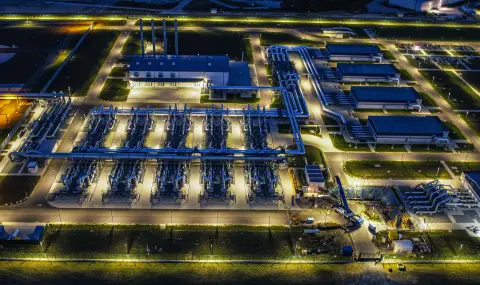The rise in natural gas prices in recent weeks has brought back bad memories of the energy market turmoil after Russia's invasion of Ukraine in 2022. At that time, Europe was quick to shake off its dependence on Russian gas, which sent the price of the raw material skyrocketing.
This has not only fueled high inflation, but also raised concerns about possible power outages. High prices, in turn, have burdened energy-intensive industries and led to the closure of enterprises and job losses.
However, the last two winters have been milder and Europe has hardly felt any difficulties - including due to lower energy consumption for heating. Now, however, natural gas prices have started to rise again: on November 21, one megawatt-hour was selling for almost 49 euros - the highest price in more than a year.
Are the concerns justified?
Nevertheless, prices are still well below their 2022 levels, especially given that overall gas demand has declined since then. The shock of the November price increase can also be explained by the fact that throughout 2024 prices were far lower than at any time since the start of the war in Ukraine.
The prospect of a colder winter has raised concerns that stocks, which were until recently large, could run out and trigger a cyclical price increase. Meanwhile, however, Russia's influence on the European market has significantly diminished after 2022, recalls Petras Katinas, an energy analyst at the Center for Energy and Clean Air Research (CREA). Therefore, he believes that fears of a new crisis are exaggerated. "The majority of EU member states are no longer so dependent on Russian gas," he told DW.
But what about Russian gas?
Russia is no longer the giant it once was when it came to gas supplies to the EU. The share of Russian gas imported by pipeline by member states was 40% of the total in 2021, and in 2023 it fell to around 9%. On the other hand, imports of Russian liquefied natural gas (LNG) into the EU have increased. In 2024, the increase is almost 15%.
Austria, one of the last European countries still receiving gas via pipeline from Russia, has permanently stopped supplies of the fossil fuel after a legal dispute with the state-owned Russian energy company Gazprom. Slovakia and Hungary are still receiving Russian gas, but all indications are that these imports will end at the end of this year. The five-year gas transit contract between Gazprom and the Ukrainian state company “Naftogaz“ for the transport of Russian gas through Ukrainian territory expires this year, and the Ukrainian government has already announced that it will not be extended.
Boris Dodonov, head of the Center for Energy and Climate Research at the Kiev School of Economics, says that “Ukraine has no economic reason to extend it“.
Liquefied natural gas - the solution to all problems?
Dodonov believes that Europe will be able to meet its energy needs without Russian gas, as it imports liquefied natural gas from the United States. Moreover, US President-elect Donald Trump is expected to increase this production, and Europe may be ready to conclude a major gas trade deal with the US.
After the Russian invasion of Ukraine, LNG now accounts for 34% of Europe's total gas supply - twice as much as before the war began in 2022. However, the switch to LNG also means that Europe will be more exposed to global price pressures.
Ed Cox of independent commodity data provider ICIS believes that in the event of a cold winter and after the transit through Ukraine is suspended, Europe will still be able to cover its needs with LNG. However, there is a risk of significantly higher prices, as supplies cannot increase dramatically in the short term. "The question is not whether we will have enough gas, but how expensive it will be," Cox added.
Author: Arthur Sullivan
